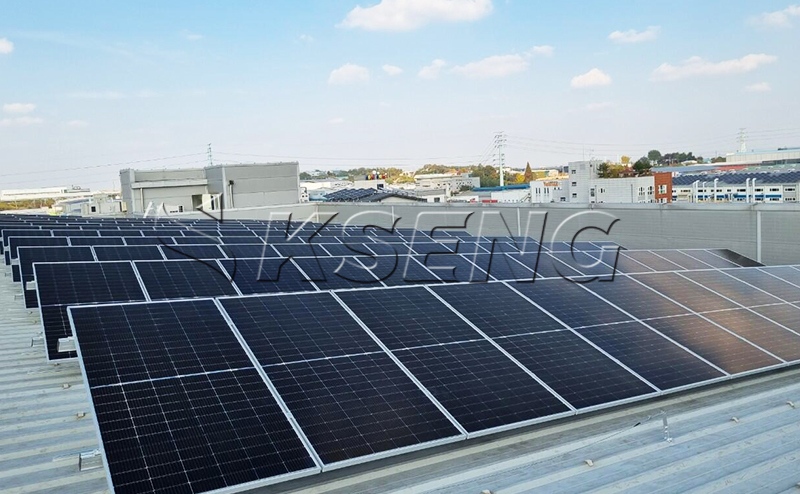How to Install PV Mounts on Different Types of Roofs?
Apr 24, 2023Roof PV mountings are special brackets designed for placing, installing and fixing solar panels in solar PV power systems. Generally, the materials available are aluminium, carbon steel and stainless steel. In the specific installation process, the appropriate installation method needs to be chosen according to the different types of roof.
1. Concrete Roofs
The installation of solar mounting systems on concrete roofs all use concrete as the foundation.
There are two ways of producing foundations, as follows:
①. Pour Cement on Site to Make Foundations
Advantages: it can be integrated into the roof, which can be strong and use less cement.
Disadvantages: The rebar needs to be pre-built in the roof of the building. Or use expansion screws to connect the concrete foundation to the roof as one. This tends to damage the waterproof layer of the roof and can easily leak over time.
②. Cement Foundation Counterweight Briquettes
Accurate statistics are required on the average annual wind speed at the project site and the wind direction in different seasons to calculate the positive and negative wind pressures. The weight of the concrete foundation is then converted from the wind pressure level. Pre-processed cement briquettes of uniform dimensions are then transported to the site for installation.
2. Mental Roofs
Mental roofs are generally used on light steel buildings, mostly in standardized workshops and warehouses. Light steel buildings use light weight coloured steel tiles for the roof so spans can be made very large. This is ideal for the large-scale laying of solar modules. The city's industrial parks are standardized plants built in successive blocks, with large numbers and areas, often allowing the construction of tens of megawatts of solar power plants at a time.
The mental roofs are made up of thin metal sheets wrapped in foam sheets, which cannot be used to fix the mountings for the battery components by conventional methods. A special 'clamp' is required, the use of which will not damage the original structure and will not cause leaks or structural damage to the roof as a whole.

From a load-bearing point of view: it is inevitable that more brackets will be used if installed at the optimum angle. This will add weight to the roof. From a safety point of view, the modules cannot be installed parallel to the roof by installing at the optimum angle of inclination. This creates additional wind pressure when the wind is blowing, which can be a safety hazard. In summary of the above two points, the modules can only be laid flat on a mental roof. The number of modules installed is only relevant for roof area and load bearing and is not optimized.
3. Glazed Tile Roof
This refers to pitched roofs with concrete underneath the tiled surface. The installation is usually done by uncovering the tiles, placing expansion screws in the concrete, installing bent hook adapters and then covering the tiles back up. The key is to control the position of the expansion screw away from the lower edge of the tile. It may also need to saw a slit in the lower edge of the tile if wanted to look good. Particular attention must be paid to the thickness of the concrete, which must not damage the waterproof structure of the roof.